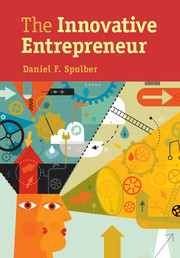Book contents
- Frontmatter
- Contents
- Preface
- Acknowledgments
- 1 Introduction
- 2 Entrepreneurial Motivation
- 3 Innovative Advantage
- 4 Competitive Pressures and Entrepreneurial Incentives to Innovate
- 5 Creative Destruction
- 6 Creative Destruction
- 7 Creative Destruction
- 8 Creative Destruction
- 9 The Wealth of Nations
- 10 Conclusion
- Bibliography
- Index
2 - Entrepreneurial Motivation
Maximizing Life-Cycle Utility
Published online by Cambridge University Press: 05 July 2014
- Frontmatter
- Contents
- Preface
- Acknowledgments
- 1 Introduction
- 2 Entrepreneurial Motivation
- 3 Innovative Advantage
- 4 Competitive Pressures and Entrepreneurial Incentives to Innovate
- 5 Creative Destruction
- 6 Creative Destruction
- 7 Creative Destruction
- 8 Creative Destruction
- 9 The Wealth of Nations
- 10 Conclusion
- Bibliography
- Index
Summary
Why do individuals choose to become innovative entrepreneurs? The life-cycle theory of entrepreneurship presented here shows that entrepreneurs create start-ups and establish firms as a form of asset accumulation. Entrepreneurship is integral to the individual's life-cycle planning because of the close connection between saving and investment decisions. Entrepreneurs make consumption and savings decisions at the same time that they provide effort, IP, and investment to create and develop the start-up. The entrepreneur's ownership shares in the start-up and the firm are among the assets accumulated over the individual's lifetime. The entrepreneur may divest ownership of the firm after it is established or later during retirement. The entrepreneur may transfer ownership of the firm and other assets to younger generations. This approach draws on Modigliani and Brumberg's life-cycle theory of consumption, which argues that individuals accumulate assets over their lifetime and begin to sell off assets during retirement, resulting in a transfer of assets to younger generations.
The innovative entrepreneur maximizes life-cycle utility subject to budget constraints that include the costs and returns associated with entrepreneurship. The entrepreneur both contributes personal assets and builds personal assets. The entrepreneur often faces financing and liquidity constraints in creating the start-up and establishing the new firm. The entrepreneur's personal contributions to the start-up and the new firm include IP, human capital, and investment capital. As a consequence, the entrepreneur's business decisions and personal consumption and saving decisions tend to be financially interdependent.
- Type
- Chapter
- Information
- The Innovative Entrepreneur , pp. 39 - 77Publisher: Cambridge University PressPrint publication year: 2014



